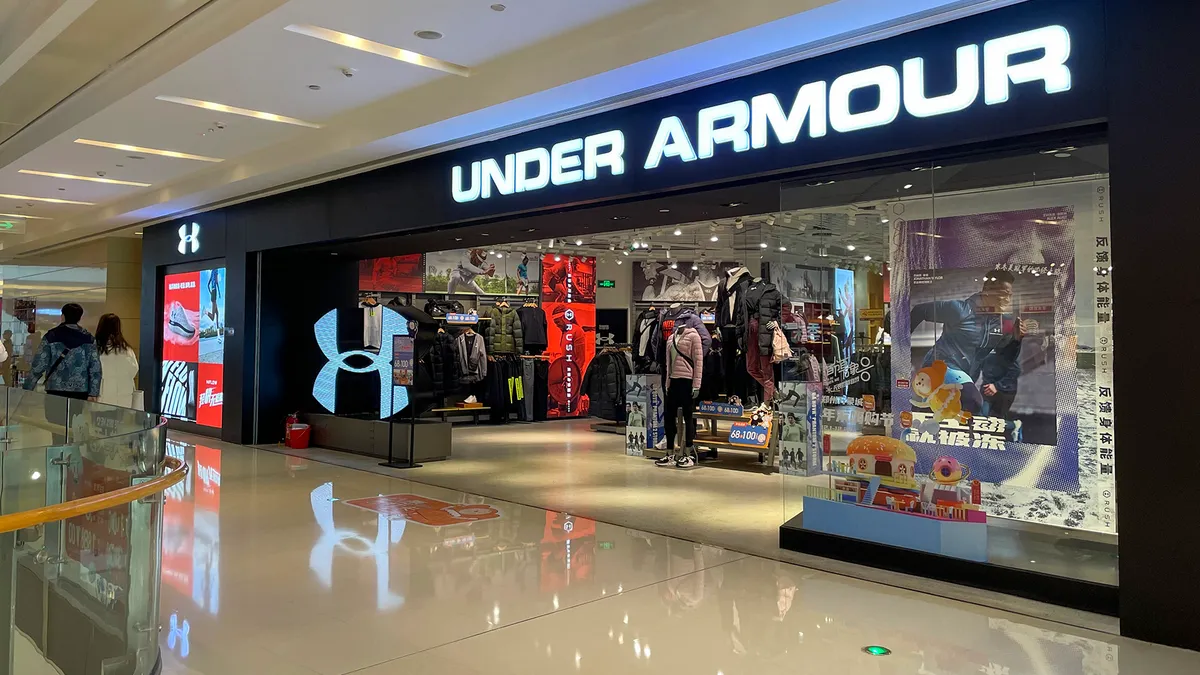Dive Brief:
- Under Armour’s revenue grew 1.8% to about $1.6 billion in the period ending Sept. 30, according to a press release. Earnings and revenue came in above analyst estimates and were described as better than feared.
- The brand’s North American revenue fell by more than 2% while international revenue was up 7%. By category, footwear revenue grew 14% percent to $376 million, apparel fell 2% to $1 billion and accessories dropped 12% to $111 million.
- Under Armour’s gross margin came under pressure during the period, with a year-over-year decline of 560 basis points, to 45.4%, driven by markdowns to clear inventory and still-elevated freight costs.
Dive Insight:
Under Armour managed to move the needle up on revenue after a small decline last quarter. It comes in a challenging environment, with apparel sellers wrestling with falling discretionary demand.
Like Adidas and other peers, Under Armour has had to tamp down expectations for the year, with the company now projecting revenue growth in the low single digits rate compared to the previous estimates 5% to 7%. Under Armour cited "a more challenging retail environment and additional negative impacts from changes in foreign currency” in shaving down its guidance for the year.
With consumer demand weakening, Under Armour (again, like many if not most apparel sellers) has had to resort to markdowns, which may help sales from bottoming out and inventories from skyrocketing but has made a large dent in the company’s margins.
At Under Armour, inventories for the period were up 29% from last year, but that is compared to a time when inventory was constrained for Under Armour, and the entire market, because of struggles acquiring product from supply chains.
“It feels as if we're now back at the inventory levels we kind of need to be in order to run the business appropriately,” Under Armour interim CEO Colin Brown told analysts Thursday. “Now overall we've been pretty strong with how our supply chain is playing out and our ability to kind of use that actually as a tool for us to continue to drive further growth.”
The inventory overhangs come as Under Armour has been tinkering with its product approach. Neil Saunders, managing director of GlobalData, noted in emailed comments that “Under Armour has changed its product mix to include more fashionable styles which will date much faster than more traditional sporting lines.”
That in turn could lead to inventory that dates faster and needs to be cleared with more urgency, and potentially heavier markdowns in a slow market.














